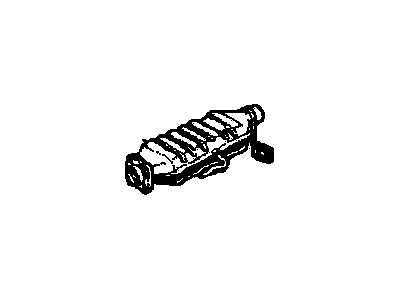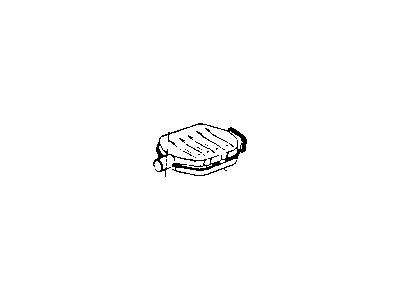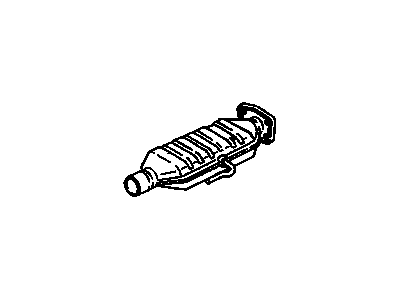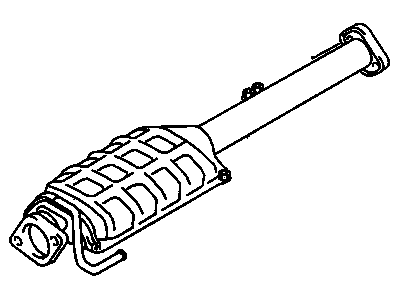
My Garage
My Account
Cart
Genuine Chevrolet Caprice Catalytic Converter
Cat. Converter- Select Vehicle by Model
- Select Vehicle by VIN
Select Vehicle by Model
orMake
Model
Year
Select Vehicle by VIN
For the most accurate results, select vehicle by your VIN (Vehicle Identification Number).
11 Catalytic Converters found
Chevrolet Caprice Catalytic Converter
The Catalytic Converter in Chevrolet Caprice vehicles is the critical part of the emissions systems, which transform the lethal toxins such as Carbon Monoxide, Hydrocarbons, Oxides of Nitrogen into harmless compounds such as water, Carbon dioxide, and Nitrogen. Normally constructed with a honeycomb design which is made of a metal or ceramic, the converter contains precious metallic elements such as platinum, palladium, and rhodium to accomplish the oxidation process of CO and HC, besides reducing NOx. The reasons could be, mechanical failure of the engine, an impact on the converter, clogging or other factors and signs indicating the failure are poor performances, squealing noises and the check engine light. For improved performance, there are available high flow performance catalytic converters and you can choose the direct fit type, and universal converters which needs cutting of pipe and clamping. In general, the Catalytic Converter within Chevrolet Caprice cars is an important part for purging hazardous emissions while at the same time maintaining the capacity of the engine.
Each OEM Chevrolet Caprice Catalytic Converter we offer is competitively priced and comes with the assurance of the manufacturer's warranty for the part. Furthermore, we guarantee the speedy delivery of your orders right to your doorstep. Our hassle-free return policy is also in place for your peace of mind.
Chevrolet Caprice Catalytic Converter Parts Questions & Experts Answers
- Q: How to replace a catalytic converter on Chevrolet Caprice?A:The catalytic converter is an emission control device that reduces hydrocarbon and carbon monoxide pollutants in the exhaust system. It contains beads coated with platinum and palladium, and it is important to use only unleaded gasoline to prevent lead contamination and reduce combustion chamber deposits and corrosion. While periodic maintenance is not required, it is advisable to inspect the converter and related exhaust components during other service. If the converter is ineffective, it can be replaced or the coated beads can be drained and replaced. Caution should be exercised when working near the converter due to its high temperatures, and proper lifting pads should be used to avoid damage. There are no functional tests for the home mechanic to determine if the converter is working properly. In the rare event that the converter needs to be replaced, the car should be raised and supported securely, and the converter should be disconnected at the front and rear using penetrating oil if necessary. The inlet and outlet converter flanges can then be separated from the exhaust pipes, and the converter can be removed from under the vehicle. Installation is the reverse of the removal process, using new nuts and bolts. There are two types of catalytic converters, and if the monolith converter fails, it must be replaced entirely. The catalyst in bead type converters can be changed by draining and filling the beads through a plug at the bottom of the converter. This process is best done by a dealer with specialized equipment, but it can also be done with the converter removed from the car. To fill the converter with new beads, it should be raised at a 45-degree angle and the beads should be poured in while tapping lightly on the converter belt. A special service fill plug is required to replace the stock one, and it should be installed according to the provided instructions. Finally, the converter should be installed, the engine started, and checked for leaks.
Related Chevrolet Caprice Parts
Browse by Year
1996 Catalytic Converter 1995 Catalytic Converter 1994 Catalytic Converter 1993 Catalytic Converter 1992 Catalytic Converter 1991 Catalytic Converter 1990 Catalytic Converter 1989 Catalytic Converter 1988 Catalytic Converter 1987 Catalytic Converter 1986 Catalytic Converter 1985 Catalytic Converter 1984 Catalytic Converter 1983 Catalytic Converter 1982 Catalytic Converter
